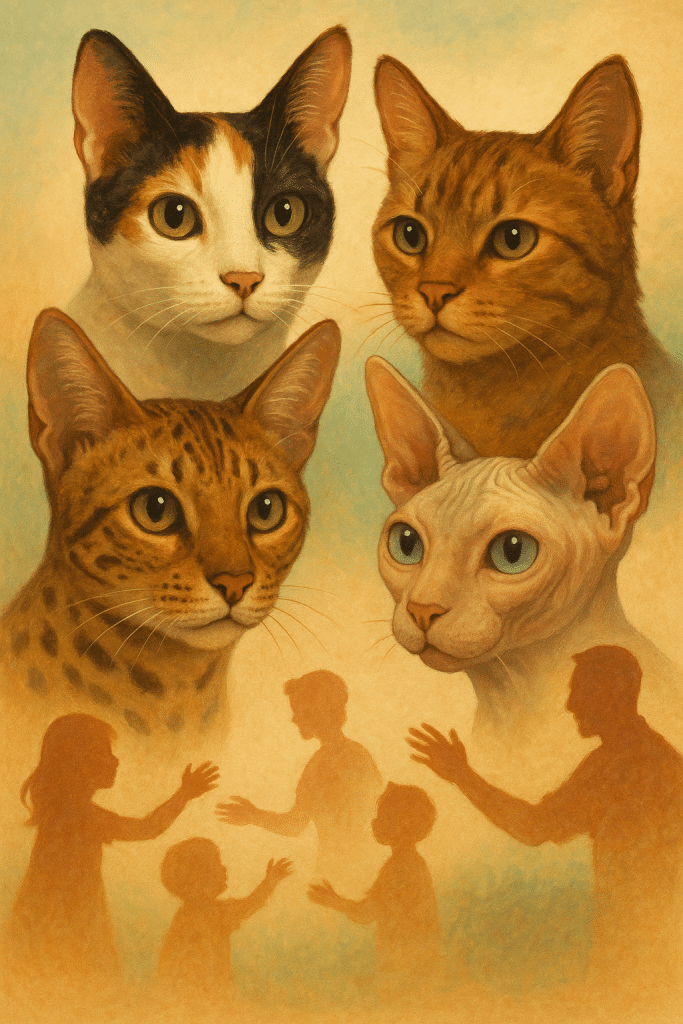Introduction to Rare Cat Breeds for Families and Pet Owners
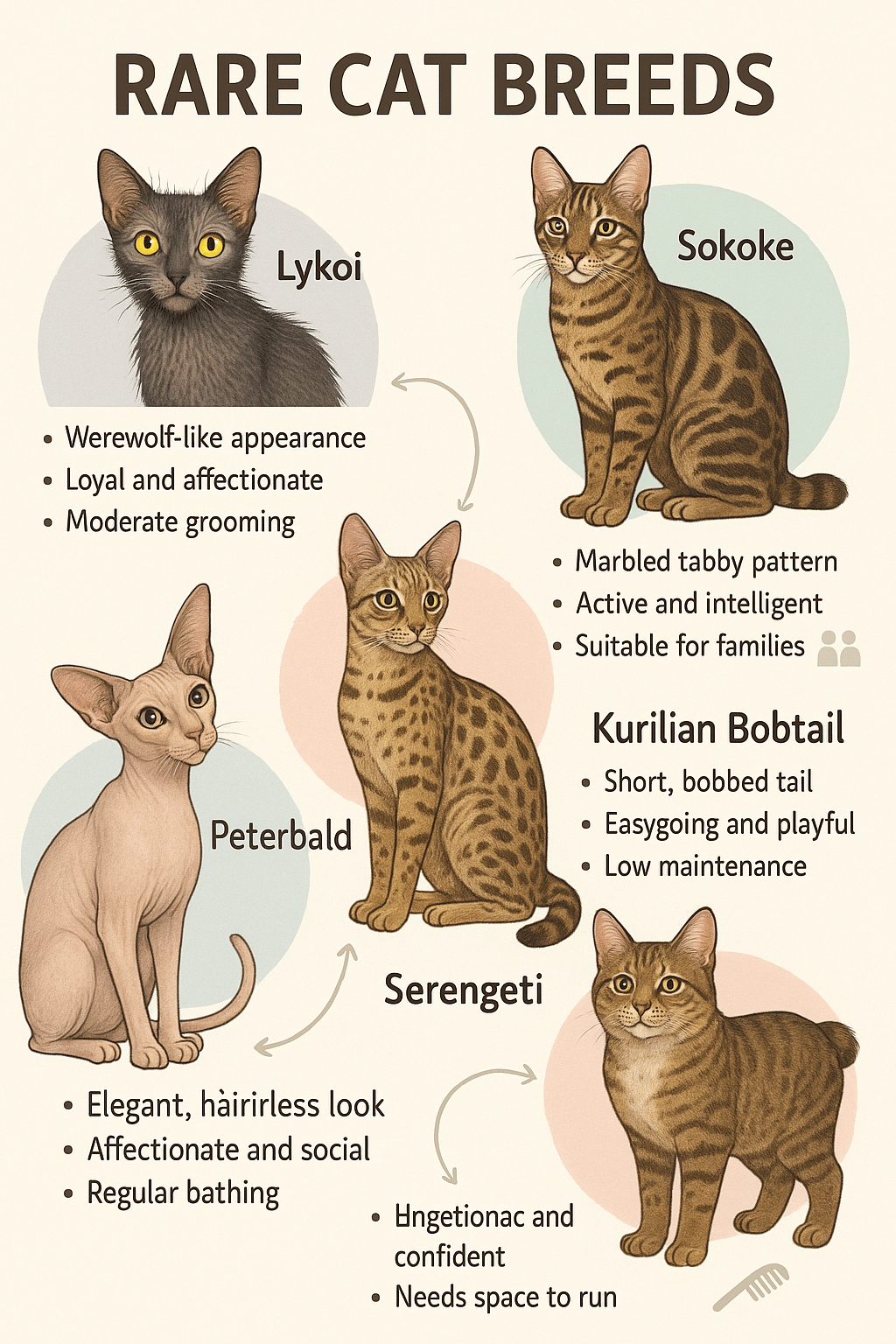
When it comes to choosing a cat breed for your family, the sheer variety might feel a bit overwhelming. For pet owners and families seeking something truly special, rare cat breeds offer a unique blend of beauty, personality, and an uncommon heritage that can truly enrich your home. These breeds aren’t just ordinary pets — they’re living pieces of history, exhibiting distinctive coats, temperaments, and traits that you won’t find in your typical household cat.
In this article, I’ll guide you through five stunning rare cat breeds, unveiling their origins, characteristics, care needs, and how to train them to be wonderful family companions. Alongside insights into grooming, temperament, and living arrangements, you’ll learn how to select a breed that fits your lifestyle and enhances your family dynamic. So, get ready to discover unique furry friends who may just become your next lifelong companions!
Defining Rare Cat Breeds: What Makes a Breed Rare?
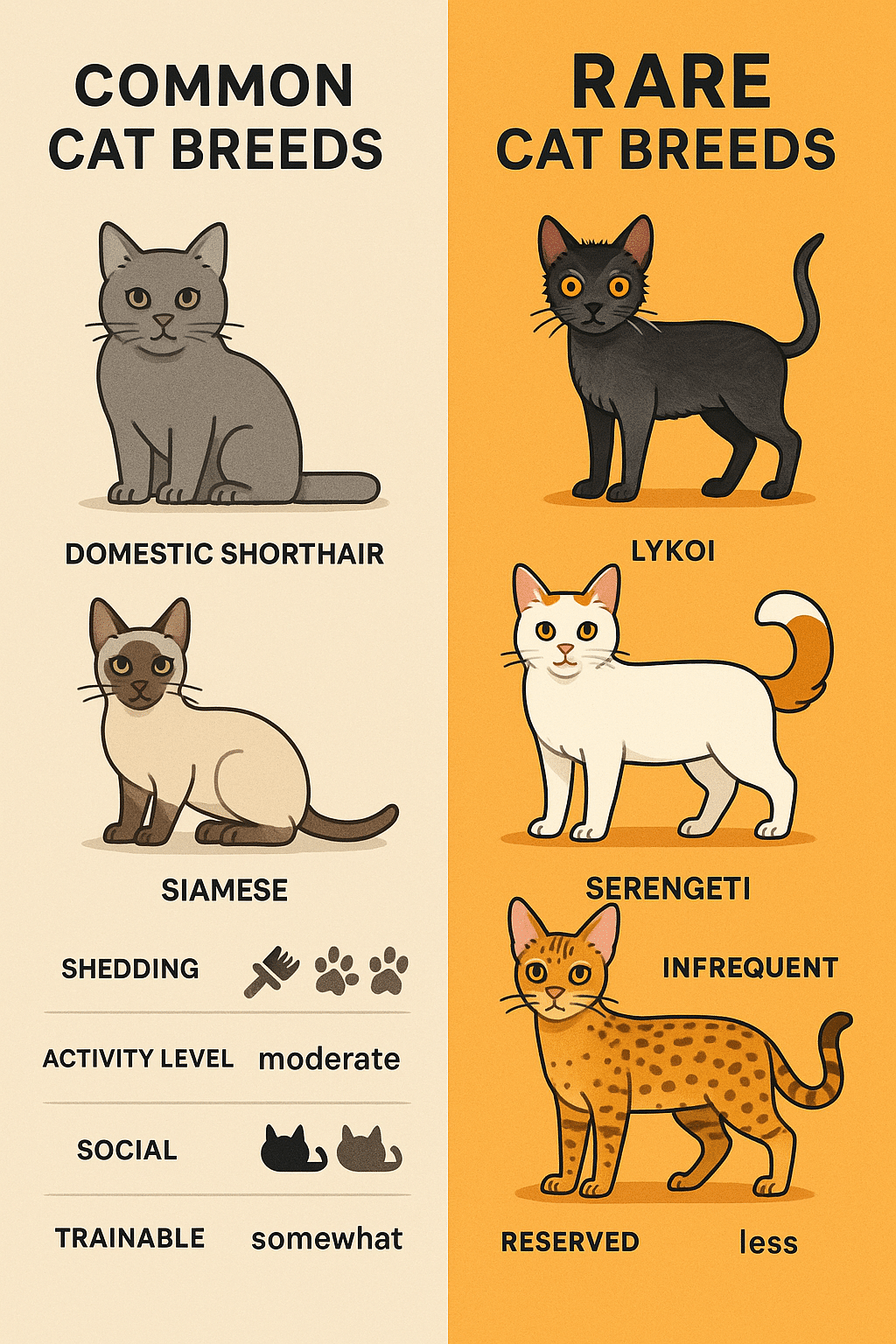
When we talk about rare cat breeds, it’s essential to understand what exactly makes a breed “rare.” Often, these breeds have limited populations worldwide, unique genetic lineages, or geographical origins that set them apart from more common cat breeds like the Domestic Shorthair or Siamese. Some are newly recognized by cat associations, while others have unusual physical features or temperaments.
Rarity can stem from:
- Limited breeding programs: Some breeds have controlled and small gene pools to preserve genetic purity.
- Exotic origins: Breeds native to specific regions or with unusual histories that make them scarce outside their homeland.
- Unique genetic traits: Physical or behavioral characteristics that aren’t found in everyday cats, such as curly coats or striking color patterns.
Rare breeds tend to captivate pet owners who desire not just a pet, but a characterful companion that stands out. Families often find these breeds offer rewarding experiences in terms of interaction and bond-building, although they may require special care.
Why Choose a Rare Cat Breed? Unique Traits and Family Compatibility
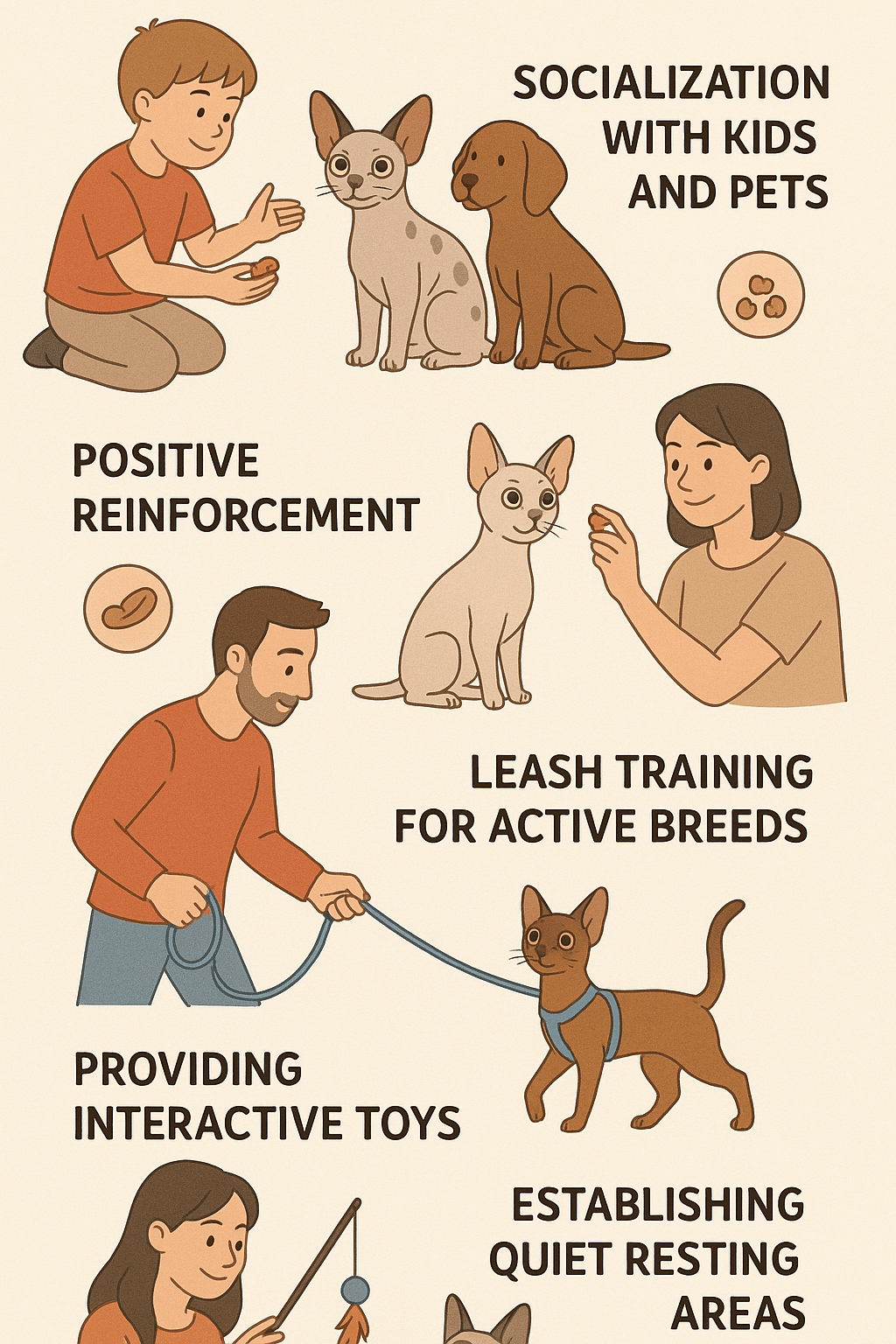
Opting for a rare cat breed isn’t purely about aesthetics. These breeds often come with fascinating temperaments and traits that match different family needs. For example, some rare cat breeds are known for being exceptionally social and affectionate, making them ideal for households with children. Others have hypoallergenic qualities that are a blessing for allergy sufferers.
Choosing a rare breed means you’re investing in a pet that often forms strong emotional bonds, displays unique communication styles, and enriches the family’s daily life with their distinct personalities. What’s more, rare cat breeds often bring a fresh perspective to cat ownership: their special needs and background can nurture patience, responsibility, and engagement among family members.
Exploring the Origins and Histories of Select Rare Cat Breeds
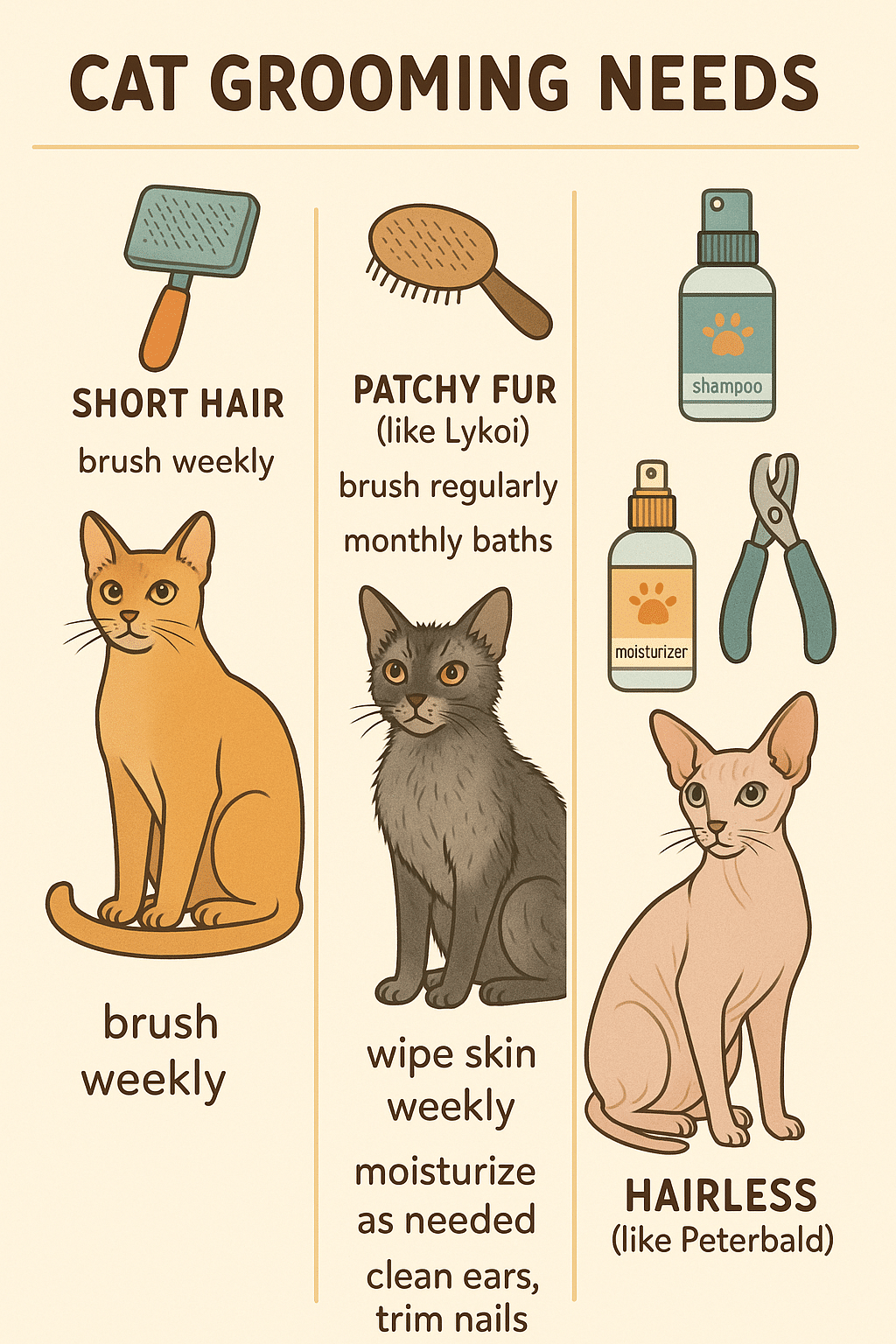
The Ancient and Exotic Lineage of the Khao Manee
The Khao Manee cat, often dubbed the “Diamond Eye,” hails from Thailand with a history dating back centuries. Revered in Thai royalty, the Khao Manee is notable for its pure white coat and striking eyes, which can be blue, gold, or even one of each. This breed’s rarity stems from its strictly controlled breeding in its homeland and a relatively small population worldwide.
Historically, Khao Manee cats were believed to bring good luck and spiritual protection. They exhibit a calm yet affectionate nature, making them a treasured companion. Their lineage is meticulously preserved, so when you bring home this breed, you’re welcoming a piece of ancient feline history into your home.
The Wild-Inspired Origins of the Serengeti and Toyger
The Serengeti and Toyger breeds draw inspiration from wild cats, and that’s immediately clear from their striking appearances.
-
Serengeti: Bred to resemble the elusive serval, the Serengeti is a tall, elegant cat with long legs and large ears. This breed is known for its energetic personality and playful spirit, reflecting its wild ancestry but adapted for domestic life.
-
Toyger: Imagine having a miniature tiger curled up in your lap. That’s essentially the Toyger, a breed selectively developed to mimic tiger stripes and coloration. Known for their affectionate temperament, Toygers are gentle giants who thrive with active families.
These wild-inspired cats display extraordinary coat patterns and commanding physical presence but require knowledgeable care to flourish in family homes.
The American Wirehair: A New York Native with a Unique Coat
Distinctly American, the American Wirehair originated in the 1960s in upstate New York, with a spontaneous gene mutation responsible for its wiry, crimped coat. This breed’s rarity comes from its unique fur texture and limited breeding outside the United States.
American Wirehairs are known for their adaptable and easygoing temperament, making them excellent family pets. Their sparse shedding and hypoallergenic tendencies appeal to those wary of cat allergies, and their curly fur demands tailored grooming techniques to maintain its springy texture.
The Sokoke: Kenya’s Camouflage Masterpiece
The Sokoke is named after Kenya’s Sokoke Forest and stands out because of its intricate, leopard-like coat pattern that looks almost like natural camouflage. This wild-looking, medium-sized cat remains a bit of a mystery outside of East Africa due to its rarity and elusive nature.
Despite their wild appearance, Sokokes are friendly, intelligent, and very active cats that love engaging with family members through play and exploration. Their exotic looks pair with a personality that balances independence and affection, perfect for families seeking an interactive but somewhat low-maintenance feline.
Unique Physical Characteristics of These Rare Breeds
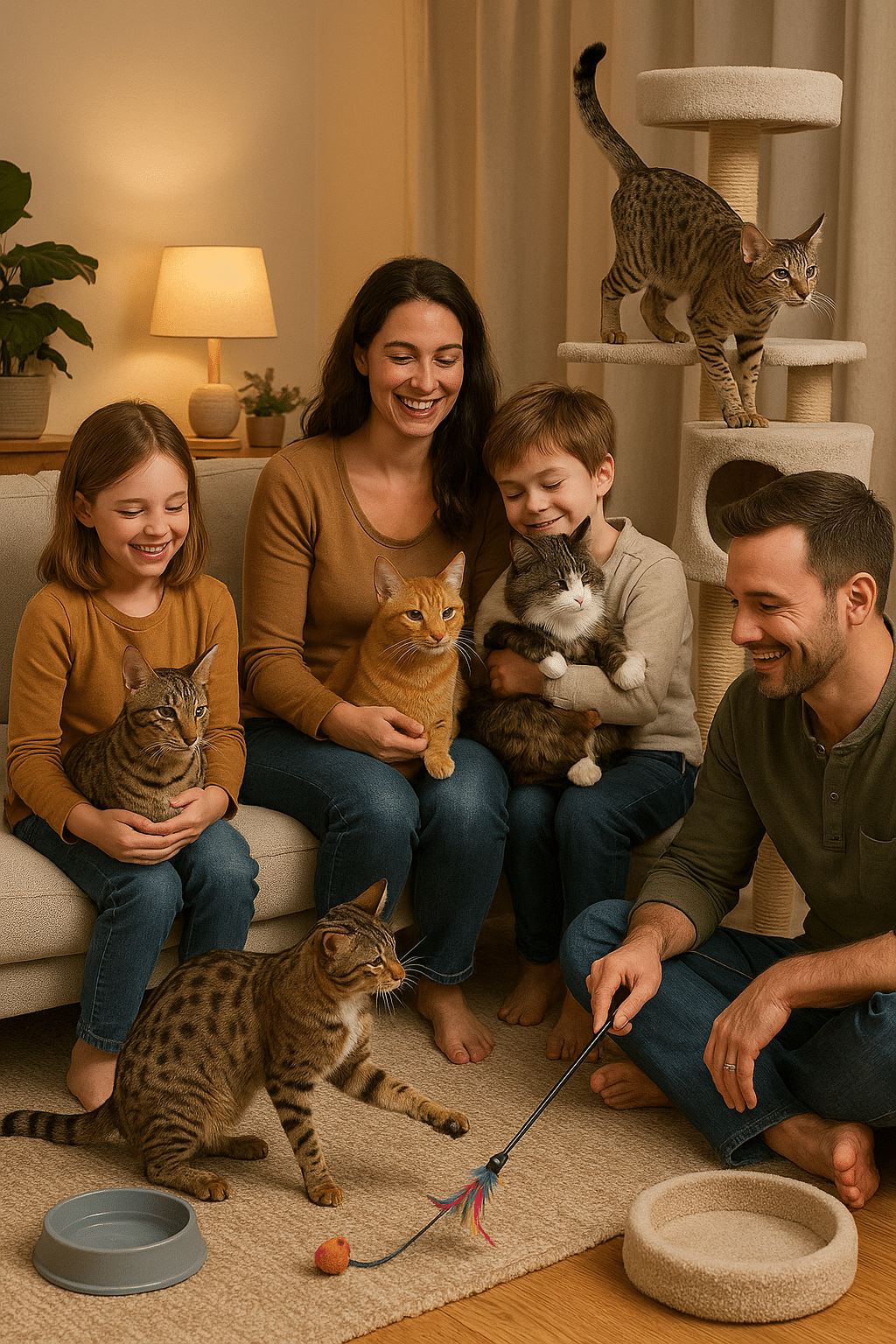
Distinctive Coat Patterns and Textures Across Rare Breeds
Coat patterns and textures often define rare cat breeds, making them visually captivating and different from the norm.
Curly and Wiry Coats: Exploring American Wirehair and LaPerm Characteristics
The American Wirehair’s standout feature is its wiry coat consisting of bent and twisted hairs, offering a tactile experience quite different from soft fur. This unique texture helps in muting shedding but requires gentle grooming with specialized brushes to avoid damaging the coat.
Similarly, the LaPerm breed flaunts a curly coat, though softer and silkier than the American Wirehair. Their wavy, sometimes ringlet-like fur demands careful attention to prevent matting and tangling but is a therapeutic joy to pet.
Striking Colorations: Toyger’s Tiger-Like Stripes and Khao Manee’s White Elegance
The Toyger’s coat mimics the classic tiger’s stripes and warm orange hues with black patterns, designed to appear as a “toy tiger.” Each pattern is unique, making no two Toygers look exactly alike.
Conversely, the Khao Manee’s pristine white coat is a lesson in elegance and simplicity, serving as a canvas for their gem-like eye colors. Their fur is sleek, and the lack of pigment often correlates with certain genetic susceptibility, a factor families should keep in mind for health.
Hypoallergenic and Hairless Traits Within Rare Breeds: Are They Family-Friendly?
Some rare breeds, like the American Wirehair, tend to cause fewer allergy issues, although it is essential to remember no cat is completely hypoallergenic. Hairless breeds, though not covered here, like the Sphynx, are loved for this trait but come with their own care challenges.
Families with allergy concerns should focus on breeds known for low dander production and consult with breeders about their specific cats’ impact on allergies. Proper grooming and home hygiene amplify comfort for sensitive family members.
Temperament and Behavior: Which Rare Cat Breeds Bond Best with Families?
Social and Vocal Personalities in Rare Breeds: What to Expect
While many rare breeds share affectionate and social traits, some are notably vocal and communicative. For instance, the Khao Manee is known for gentle “chirps” and soft meows that make it easy to respond to their needs. The Toyger, though playful, can be quite vocal, expressing their excitement or requests clearly.
Knowing these traits upfront helps families prepare to engage with their cat’s unique communication style, turning vocalization into a bonding experience rather than frustration.
Energy Levels and Playfulness: Matching Breeds to Family Lifestyles
If your family has a variety of ages and activity levels, matching the cat’s energy is crucial:
- Serengeti cats are highly playful and benefit from active play sessions, ideal for families with children who enjoy interactive pet time.
- Khao Manee and American Wirehair tend to be more laid-back, adjusting well to quieter homes or apartment living.
- Sokoke cats like to climb and explore, so they need vertical space and environmental enrichment.
Understanding each breed’s typical energy level allows for smooth integration into your daily family routine.
Rare Breeds with Unique Training Needs and Intelligence Levels
Rare breeds often show heightened intelligence and curiosity, which means they respond well to training. Positive reinforcement techniques work wonders, especially with breeds like the Toyger and Serengeti, who enjoy mental challenges and interactive puzzles.
However, this intelligence can sometimes lead to boredom or mischief if not properly stimulated. Providing toys, scratching posts, and playtime tailored to their breed characteristics prevents behavioral issues and builds a happier bond.
Caring for Rare Cat Breeds: Special Considerations for Families
Grooming Essentials: Maintaining Unique Coats and Skin Health
Each rare breed calls for specific grooming protocols:
- American Wirehair’s wiry coat should be combed weekly to maintain texture and minimize shedding.
- Khao Manee’s smooth white coat benefits from regular brushing to prevent dirt accumulation.
- Sokoke’s short but dense fur requires less frequent grooming but thorough inspecting for skin health due to their active, outdoor-inclined nature.
Grooming also serves as quality bonding time and helps spot early signs of health problems.
Nutrition and Health: Tailored Diets for Rare Cats
Nutrition is central to maintaining your rare cat’s coat, energy, and overall health. Breeds like the Khao Manee may have genetic markers making them sensitive to certain proteins, requiring high-quality, grain-free diets rich in taurine.
Consulting your vet for breed-specific dietary recommendations ensures your feline gets balanced nutrition. Hydration and weight monitoring are equally important, especially for active breeds like the Serengeti who burn more calories.
Addressing Special Care Needs: Environmental Enrichment and Stress Reduction
Rare cats often have sensitive natures or unique environmental needs. For example, Sokokes thrive in enriched spaces with climbing shelves and hiding spots, mimicking their natural habitat. Stress reduction techniques might include predictable routines, safe zones, and calm introductions to new family members.
Understanding your rare cat’s innate behavioral traits helps tailor care that promotes well-being and longevity.
Training Tips for Raising Rare Cat Breeds in Family Homes
Early Socialization and Behavior Shaping Techniques
Start interacting with your rare cat breed early to foster trust and reduce fearfulness. Introducing gentle handling, exposure to a variety of household noises, and short training sessions supports confident, well-adjusted behavior.
Early socialization is especially critical for more independent or shy breeds like the Sokoke, ensuring they blossom into family-friendly pets.
Encouraging Positive Family-Pet Interactions
Educating all family members on respectful handling and recognizing cat body language prevents misunderstandings and builds positive relationships. Setting boundaries, such as designated play areas and quiet times, helps everyone enjoy the companionship without stress.
Interactive play using toys like feather wands or laser pointers can channel the cat’s energy into fun, constructive activities.
Handling Vocal Breeds and Managing Communication Styles
If you welcome vocal breeds like the Khao Manee or Toyger, it helps to understand what their meows and chirps mean. Often, they’re asking for attention, food, or play. Responding consistently teaches your cat when it’s appropriate to seek interaction, balancing out the household dynamics.
Training vocal cats to use scratching posts or play objects can also redirect loud calls into stimulating play.
Finding and Choosing a Rare Cat Breed for Your Family
Working with Responsible Breeders and Adoption Considerations
Securing a rare cat breed should always start with reputable breeders who prioritize health, temperament, and ethical breeding practices. Look for certifications from authorities like the CFA or TICA, and ask for health clearances.
Considering adoption from breed-specific rescues is another wonderful option, giving a rare cat a second chance at a loving home while supporting animal welfare.
Understanding Pedigree Registration and Breed Recognition
Pedigree certificates ensure your cat’s purebred status and provide a record of lineage, which can be important for health tracking and breed standards. Familiarize yourself with breed registries and their recognition criteria to navigate options confidently.
This knowledge also assists in anticipating health concerns typical of the breed and underscores the importance of selective breeding.
Assessing Compatibility: Which Rare Cat Breed Fits Your Family Best?
Here’s a quick compatibility guide:
| Breed | Temperament | Energy Level | Allergy Friendliness | Ideal Home Environment |
|---|---|---|---|---|
| Khao Manee | Affectionate, Vocal | Moderate | Moderate | Families, apartments |
| Serengeti | Energetic, Playful | High | Low | Active families, larger homes |
| Toyger | Gentle, Social | Moderate | Moderate | Families, interactive homes |
| American Wirehair | Easygoing, Adaptable | Low-Moderate | Higher (hypoallergenic tendencies) | Apartments, quiet homes |
| Sokoke | Independent, Curious | High | Moderate | Enriched, spacious environments |
Evaluate your family’s lifestyle and preferences against these insights to make the best choice.
The Role of Feline Genetics and Selective Breeding in Rare Cat Breeds
Genetic Health Concerns and How to Mitigate Risks
Selective breeding aims to preserve desirable traits but can sometimes concentrate genetic health issues. Responsible breeders perform genetic testing for conditions like hypertrophic cardiomyopathy (HCM) or kidney diseases before pairing cats.
As a pet owner, maintaining regular vet visits, genetic screenings, and a balanced environment are key for longevity and well-being.
The Ethics of Breeding Rare Cats and Wildlife Conservation Impact
Ethics in breeding are critical. Preserving rare breeds shouldn’t compromise animal welfare or contribute to exotic pet trade issues. Many rare breeds, such as the Toyger and Serengeti, are developed through controlled hybrid breeding, requiring strict adherence to avoid impacting wildlife populations.
Supporting breeders who practice ethical methods and conservation awareness benefits both cats and global biodiversity.
Rare Cat Breeds and Apartment Living: What You Need to Know
Adapting Care and Environment for Indoor Lifestyle
Many rare breeds adapt well to indoor living, provided they receive adequate stimulation, exercise, and mental challenges. For example, American Wirehairs and Khao Manee cats thrive in apartment settings when given ample playtime and safe vertical spaces like cat trees.
Regular interaction curbs boredom and reinforces bonds within a confined space.
Space Requirements and Enrichment Strategies for Rare Breeds
Vertical climbing structures, puzzle feeders, and interactive toys cater to rare breeds’ curiosity and energy in smaller homes. Regular routines that include play, rest, and quiet time help maintain emotional balance, particularly with active breeds such as the Serengeti or Sokoke.
Home safety measures should be in place when housing exotic-looking rare breeds to ensure comfort and family harmony.
Conclusion: Embracing the Joy and Responsibility of Owning a Rare Cat Breed
Choosing one of these rare cat breeds is more than just bringing home a pet; it’s inviting a unique personality filled with history, beauty, and vibrant energy into your family life. Each breed I’ve introduced offers a special connection, whether it’s the regal Khao Manee or the playful Serengeti. While these cats often come with special care needs and distinct training requirements, the rewards are immeasurable. They challenge us to grow, learn, and cherish the extraordinary diversity within the feline world.
As you embark on your journey to welcome a rare cat breed, remember to work closely with reputable breeders or rescues, prepare your home to meet their unique needs, and embrace the wonderful quirks that make them so exceptional. Your family will not only gain a pet but a companion whose rare traits will kindle lifelong memories and affection.
Ready to discover the perfect rare cat breed for your family? Let the adventure begin!
FAQs About Rare Cat Breeds
Q1: What are some good rare domestic cat breeds for families with children?
Breeds like the Khao Manee and Toyger are known for their affectionate and social temperaments, making them excellent rare domestic cat breeds for families with children. Their gentle nature and playful behavior foster strong bonds.
Q2: Are there hypoallergenic rare cat breeds suitable for pet owners with allergies?
The American Wirehair is often cited as a rare cat breed with hypoallergenic tendencies due to its unique wiry coat that sheds less. However, allergy responses vary, so spend time around the breed before committing.
Q3: What special care do rare cat breeds with distinct coat patterns require?
Breeds such as the Toyger and Sokoke need regular grooming tailored to their specific fur texture and pattern to prevent matting and maintain coat health. Nutritional care is also important to support their unique coat qualities.
Q4: Can rare cat breeds bond well with families and form strong attachments?
Absolutely. Many rare cat breeds are known for their social and vocal personalities, which often translates to strong bonds with family members. Early socialization and consistent interaction help deepen these attachments.
Q5: Where can I find and adopt a rare cat breed responsibly?
Seek out registered breeders who provide health clearances and follow ethical breeding practices. Breed-specific rescues and shelters may also have rare cat breeds available for adoption, supporting animal welfare.
Quick Takeaways/Key Points
- Rare cat breeds boast unique physical features, histories, and personalities unmatched by common breeds.
- The Khao Manee, Serengeti, Toyger, American Wirehair, and Sokoke offer diverse traits suited to different family lifestyles.
- Understanding each breed’s temperament, grooming needs, and energy levels is vital for harmonious family integration.
- Responsible breeders and adoption agencies ensure healthier cats and ethical practices.
- Tailored training and environment play major roles in raising happy, well-behaved rare cats in family homes.
- Genetic testing and veterinary care mitigate risks associated with selective breeding.
- Apartment living is possible with rare breeds, provided enrichment and social interaction are prioritized.
By embracing the remarkable world of rare cat breeds, pet owners and families embark on a joyful, enriching journey filled with companionship, wonder, and lifelong memories.

